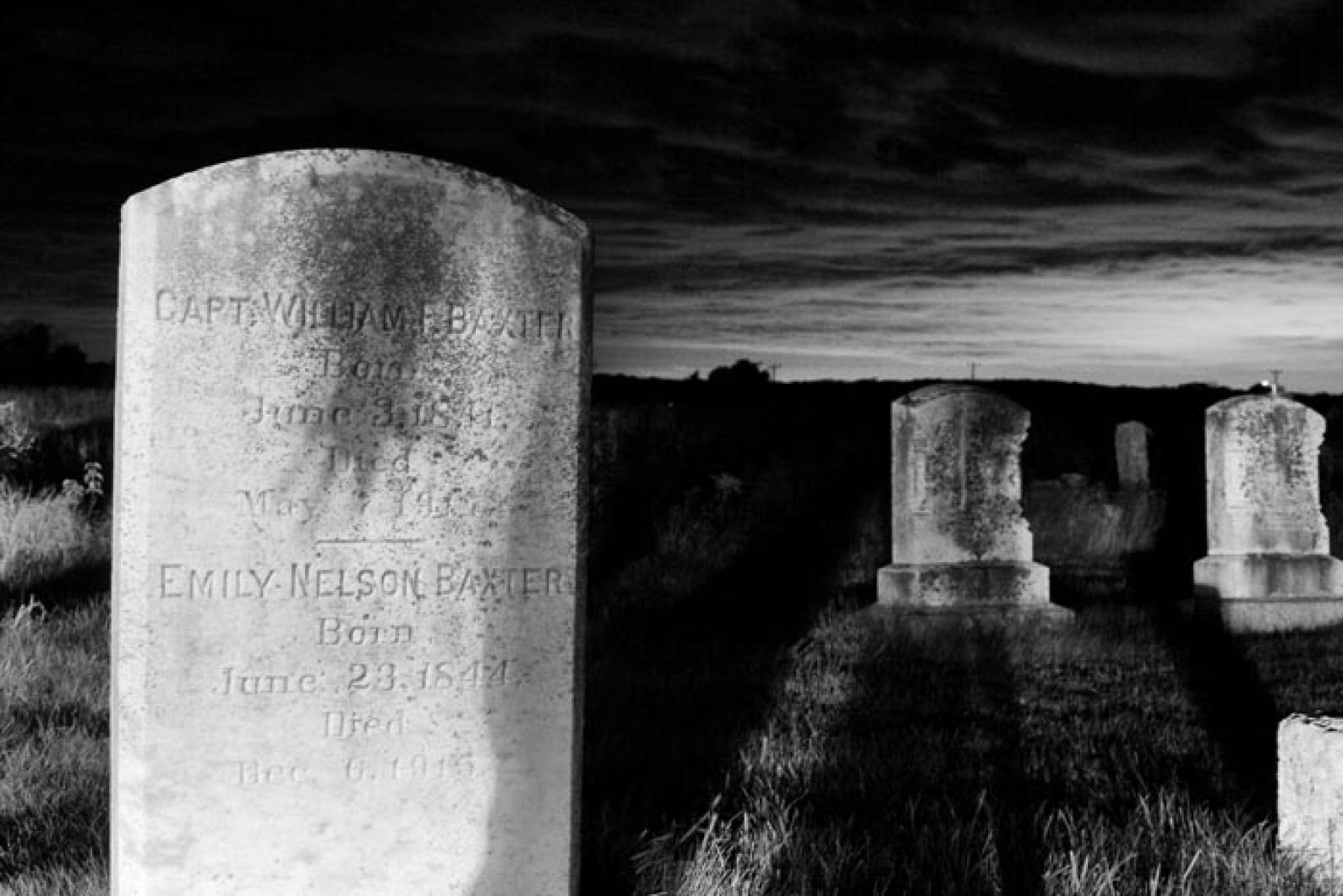Among the greatest legacies of Queen Victoria, who died in 1891, are the funeral rituals from that long-ago era that bears her name, the Victorian Age. When her husband, Prince Albert, died in 1861 the queen was so devastated she retreated from Buckingham Palace to her country estates, and wore widow’s weeds for the rest of her life.
In style for many decades, black was the new black.
Stories have been passed down of the queen’s continuing mourning exercises, such as the daily laying out of Albert’s clothes on his bed up until the day she died.
Something that could soon show up as an official maladaptive neurosis, in Victorian times worked its way into public life. Cemeteries received the biggest make-over.
Last Thursday at the Martha’s Vineyard Museum, guest lecturer and gravestone symbolism expert Richard Waterhouse, spoke about these changes. Mr. Waterhouse has been a docent at the Oakland Cemetery in Atlanta, and is now the director of the Cahoon Museum of American Art in Cotuit, Mass. Equipped with a Power Point presentation of photographs, he explained how the location of a cemetery, literally meaning a place to sleep, had shifted during this period from churchyard burial grounds to the open countryside to simulate a park.
Tombstones also became more detailed and ornate, with various symbols being constructed to give a sense of the dearly departed. For example, a tree stump designates a life cut short, and a serpent biting its tail, as well as a wreathe and any other sphere, means life everlasting.
The Victorians also loved gigantic statues of angels, and these were depicted either weeping over a catafalque or, more optimistically, standing tall with an arm pointing high to signal the way to Heaven. A five-pointed star on the angel’s crown meant Manifest of God, an acorn was a symbol of resurrection, and child angels signified the death of children who had left this vale of tears as angels themselves.
There is almost no end to the metaphors: Morning glories are another sign of resurrection, a scroll is a person’s life recorded, a dove a sign of purity and peace, and an owl a creature of watchfulness, wisdom and solitude (often found on Civil War monuments). The peacock stands for immortality, royalty and Eastern cultures, while the butterfly is yet another symbol of resurrection.
Menageries of icons can be elaborate, such as the tomb Mr. Waterhouse displayed of a snake biting a deer beside a house, the scene a representation of abandonment. Carvings of a large, open orb are meant to call up the Eye of God, this particular symbol favored by orders of Masons and Odd Fellows.
Anything displayed in threes, especially three marble steps up to a tombstone, is meant to signify the trinity. Clasped hands are for unity, steadfastness and stability, a plucked rose of a soul being carried to Heaven. Of all the crosses on display in Victorian cemeteries, three of them come to the fore: The Celtic cross, sinuous and elaborate, the plain Latin cross embraced by the Protestant traditions, and the Greek cross with four equal arms.
Like a good botanist working in marble, Mr. Waterhouse treated us to a number of other symbols used lavishly in Victorian graveyard décor: Acanthus leaves for longevity, ears of corn for a life that God cuts down, daisies for regeneration (“pushing up the daisies” derives from this Victorian reference), drapes for mourning, tassels to show wealth, ribbon bows for unity, ivy for permanence, a rock as a symbol of life, wheat for immortality, and a full rose — as opposed to the plucked rose — as a tribute to the Virgin Mary.
Folklore has it that the dogwood tree was used for the wood of the cross of Jesus, so a good number of dogwoods turn up on gravestones. The oak tree is for strength, endurance, and new growth, and weeping willows for, of course, mourning. The ubiquitous urn is also a pure symbol of grief, and a shattered urn indicates a violent death.
The lecture, even in the steady rain, lured over a dozen participants. Mr. Waterhouse also talked about how epigraphs were often written at length. A woman in the audience provided a local example and spoke about a tombstone on the Cape on which a man’s descendants accused his widow of poisoning him.
In conclusion, Mr. Waterhouse encouraged Vineyarders to go forth and hunt for 19th century symbols in all our vintage cemeteries. “You’ll spot them immediately,” he said. “The Victorians overdid everything.”
For more information on gravestone symbolism or to order the book Sacred Symbols of Oakland Cemetery by Richard Waterhouse, visit waterhousesymbolism.blogspot.com.




Comments
Comment policy »